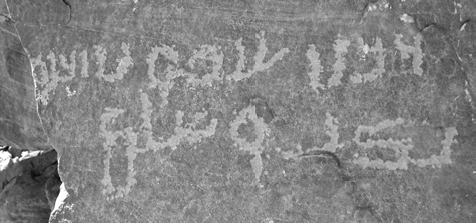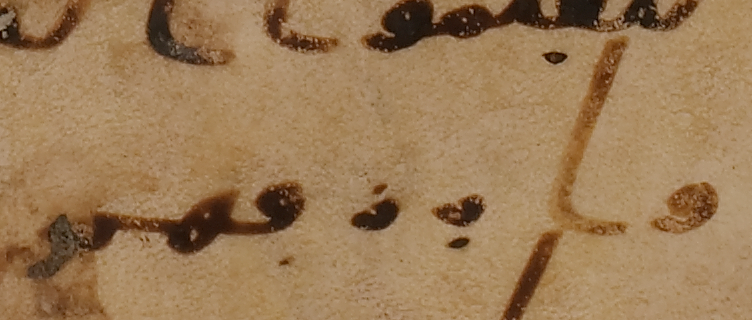The Zāy today has the same shape as the Rāʾ, only being distinguished by a dot above. But this was not always the case. In the ancestral script to the Arabic script, the Nabataean Aramaic script, the zāy had a unique and distinct shape.
#ArabicLetterofTheWeek
#ArabicLetterofTheWeek

The zāy was a simply single vertical stroke. Whereas the rāʾ had a shape that was (surprisingly!) identical to the the dāl/ḏāl.
For example in this fairly typical Nabataean inscription which mentions the name of the Goddess al-ʿuzzā (spelled <ʾlʿzʾ العزا>.
For example in this fairly typical Nabataean inscription which mentions the name of the Goddess al-ʿuzzā (spelled <ʾlʿzʾ العزا>.

Last thread I shows that the rāʾ mysterious unmerges with dāl at some point in the pre-Islamic period. When it does so, the new shape of the rāʾ merges with the zāy! As can be seen in this transitional Nabatae-Arabic inscription, top line reads:
<dkyr ʿnmw br zkyw>
<dkyr ʿnmw br zkyw>

The fact that the zāy is distinguished from the rāʾ with a single dot above is actually surprising. As we have seen in a few earlier threads, signs that have a base form with no dot and a 'augmented' form with one (more) dot above have a special history in the Nabataean script.
These pairs are all cases for which the Nabataean script never had separate signs:
Aramaic lacks interdentals:
t, ṯ = ت ث
d, ḏ = د ذ
ṭ, ẓ = ط ظ
Uvular fricatives:
ḥ, ḫ = ح خ
ʿ, ġ = ع غ
And Lateral fricatives:
s, š = س ش
ṣ, ḍ = ص ض
Aramaic lacks interdentals:
t, ṯ = ت ث
d, ḏ = د ذ
ṭ, ẓ = ط ظ
Uvular fricatives:
ḥ, ḫ = ح خ
ʿ, ġ = ع غ
And Lateral fricatives:
s, š = س ش
ṣ, ḍ = ص ض
When letters used to be distinct, but merge (in non-final position) at some point during the history of the script, rather use contrastive dots above and below or multiple dots.
y, n, b, t used to have distinct shapes and don't use the no dot/one dot above system: ي ن ب ت
y, n, b, t used to have distinct shapes and don't use the no dot/one dot above system: ي ن ب ت
f and q used to have distinct shapes, and don't use the no dot/one dot above system, but instead one dot below/one dot above (later replaced by one dot above and two dots above):
f q = ڢ ڧ
Same goes for the ǧ against ḥ/ḫ: جـ خ
So we would actually expect r with a dot below!
f q = ڢ ڧ
Same goes for the ǧ against ḥ/ḫ: جـ خ
So we would actually expect r with a dot below!
As it turns out, some early Quranic manuscripts in fact do write it like this:
r = ڔ
z = ز
If that is the original situation than the historical memory that you only use no dot/+ dot for letters for which Aramaic never had a contrast is maintained.
wa-rzuqhum
r = ڔ
z = ز
If that is the original situation than the historical memory that you only use no dot/+ dot for letters for which Aramaic never had a contrast is maintained.
wa-rzuqhum

But the same manuscript (DAM 01-29.1) also uses a dot below the dāl which then breaks the nice system that I'm presenting... so maybe we should just accept that the r~z pair is an exception.
Was the dot system invented after r~z merged but before ي ن ب ت ڢ ڧ جـ خ merged? Maybe!
Was the dot system invented after r~z merged but before ي ن ب ت ڢ ڧ جـ خ merged? Maybe!

• • •
Missing some Tweet in this thread? You can try to
force a refresh
















